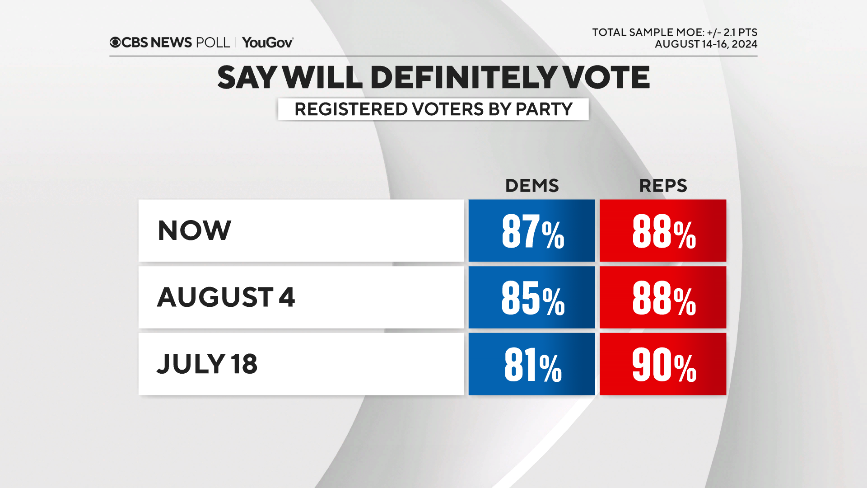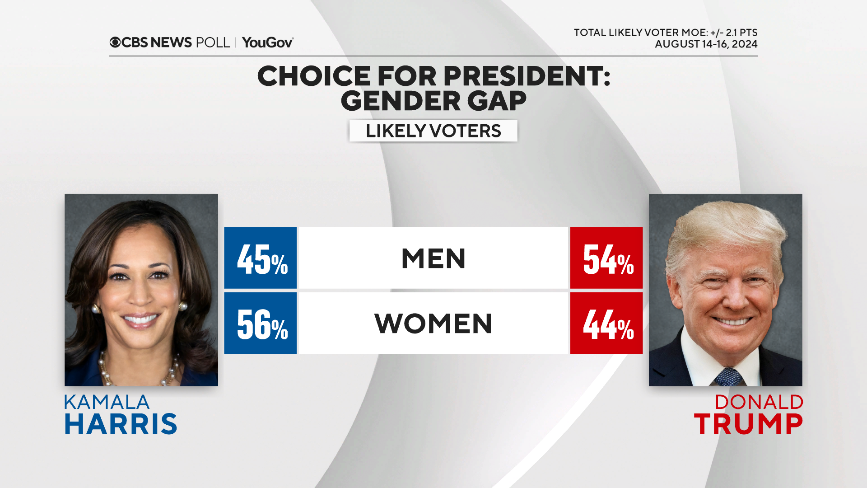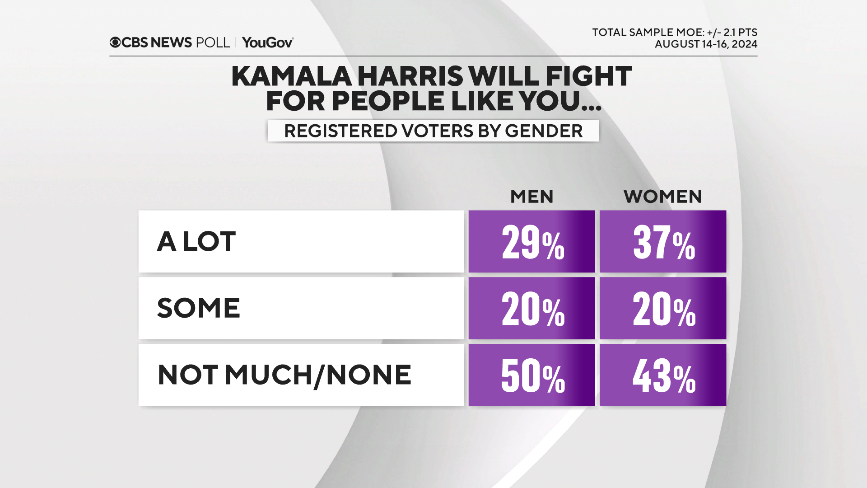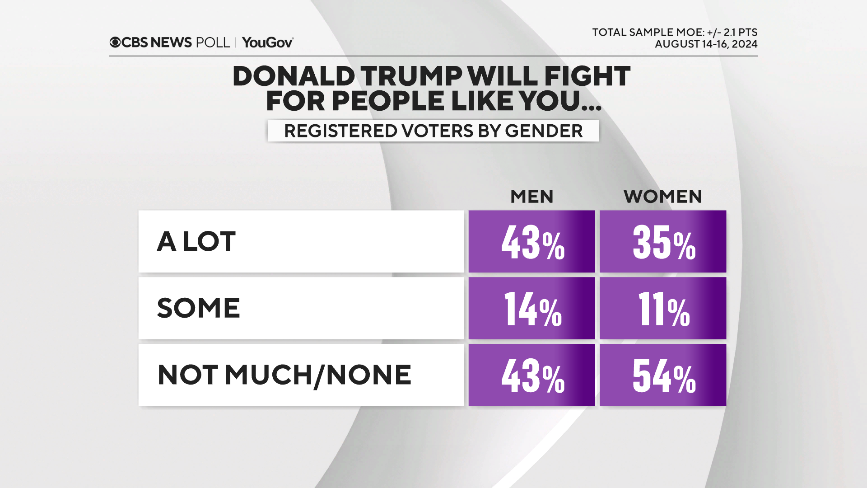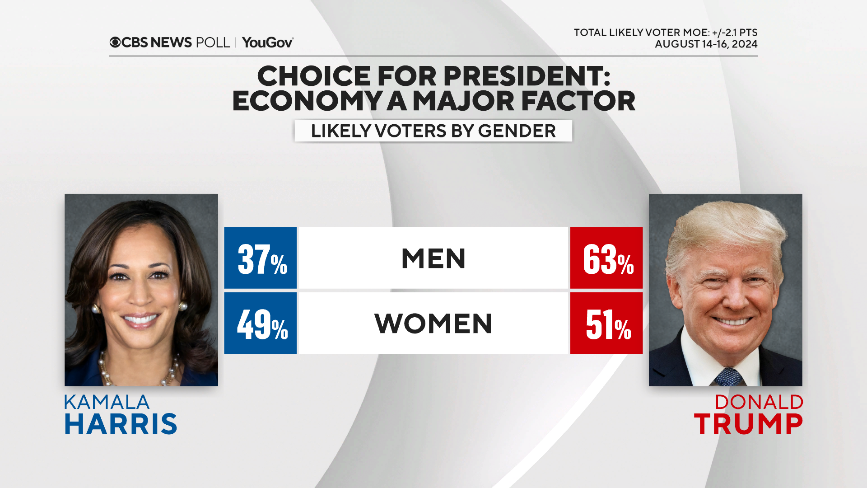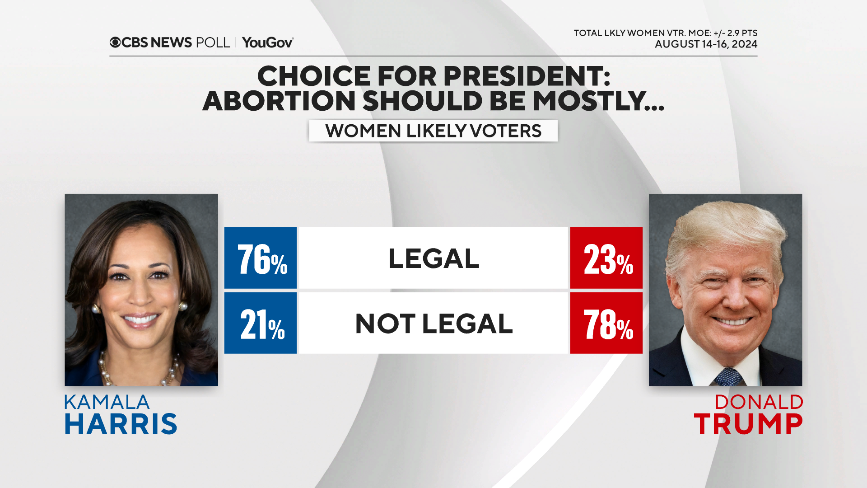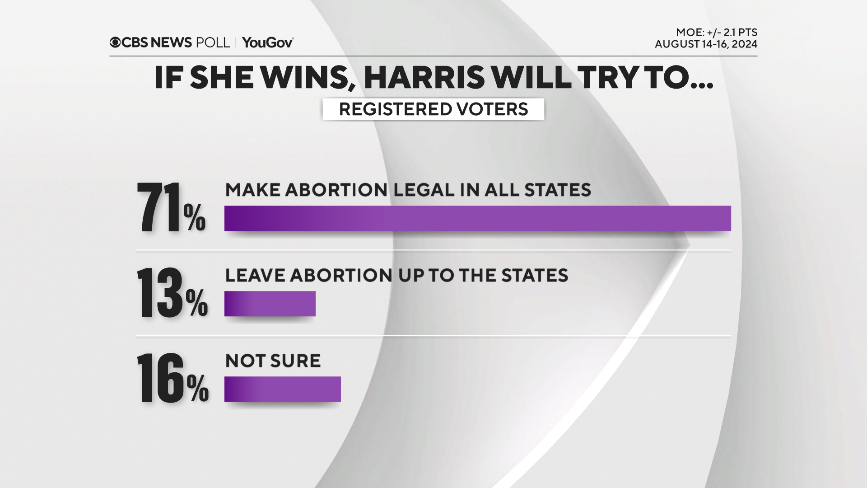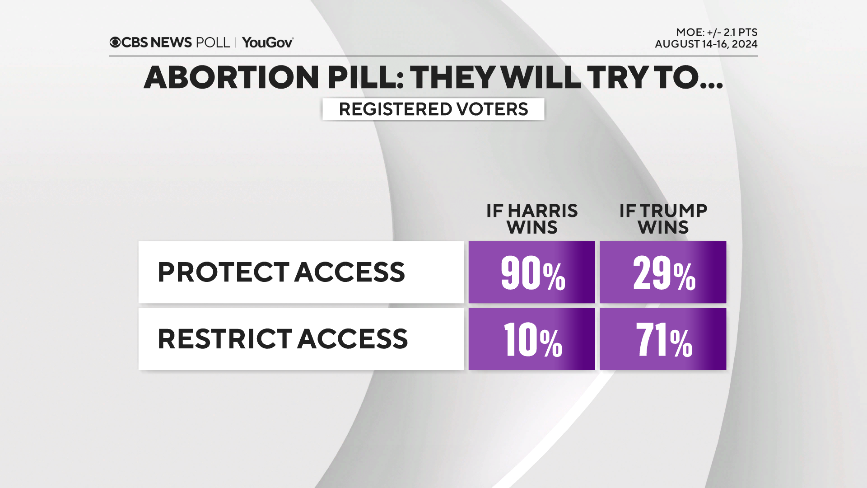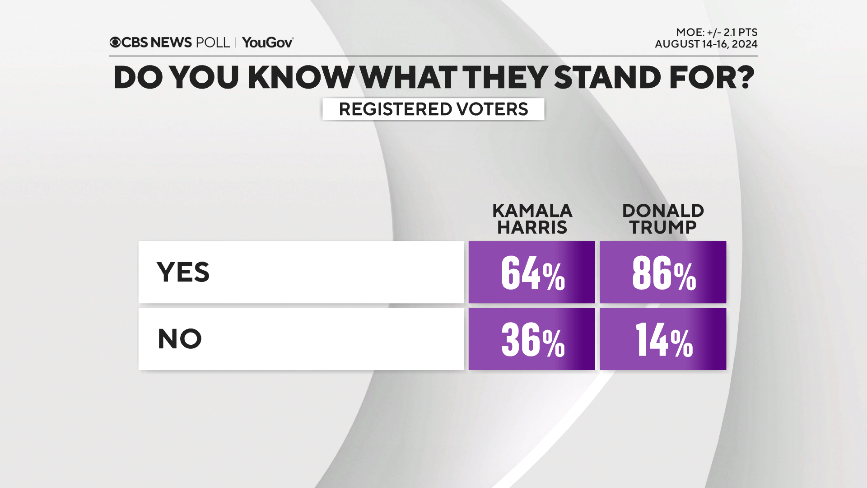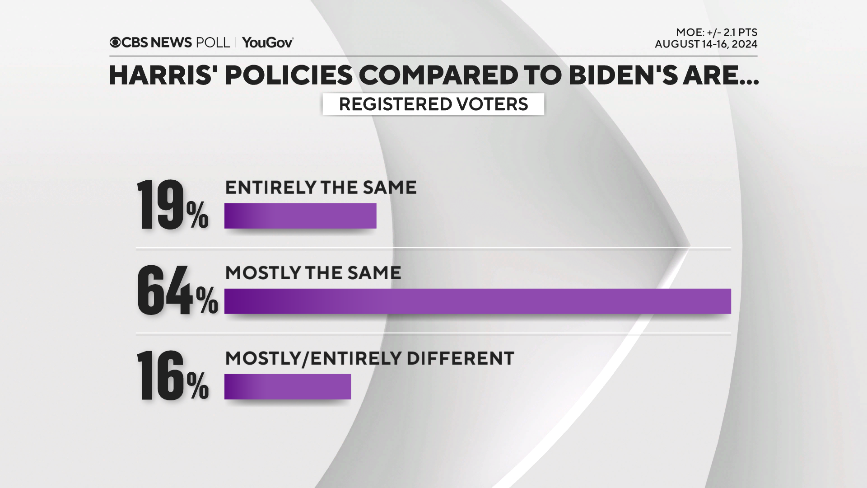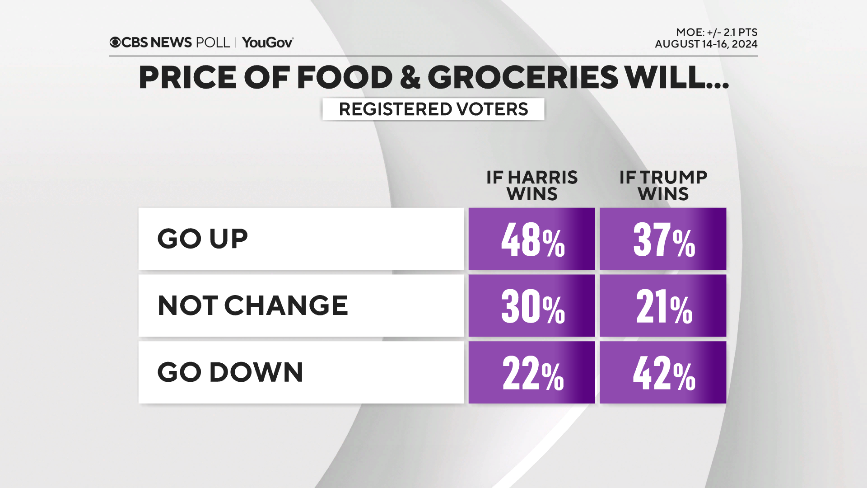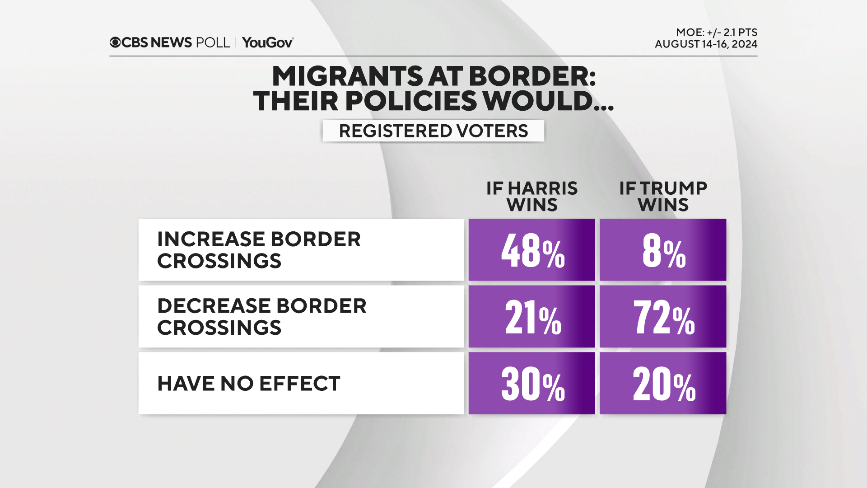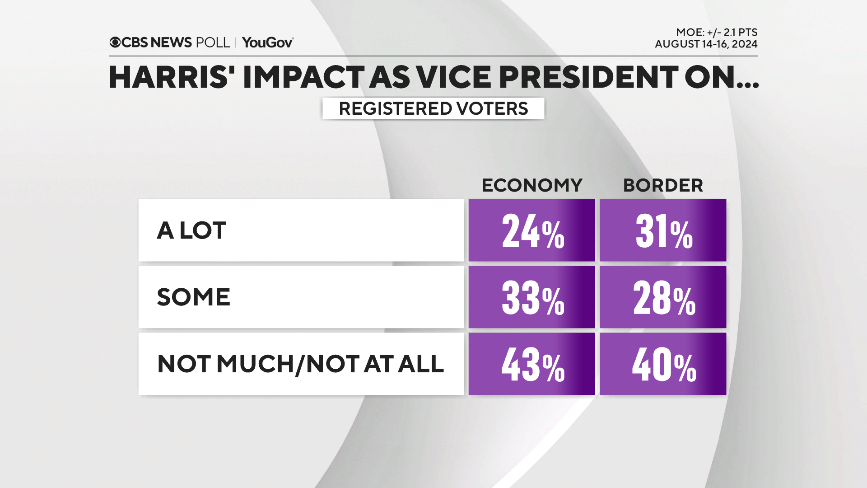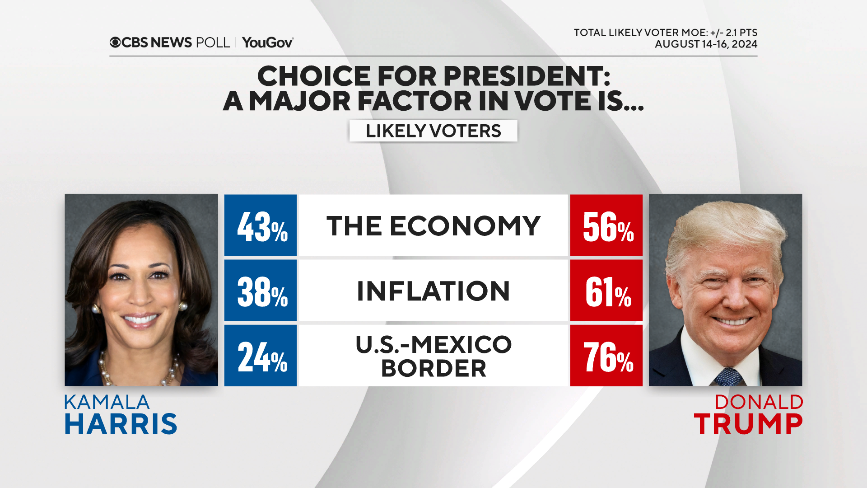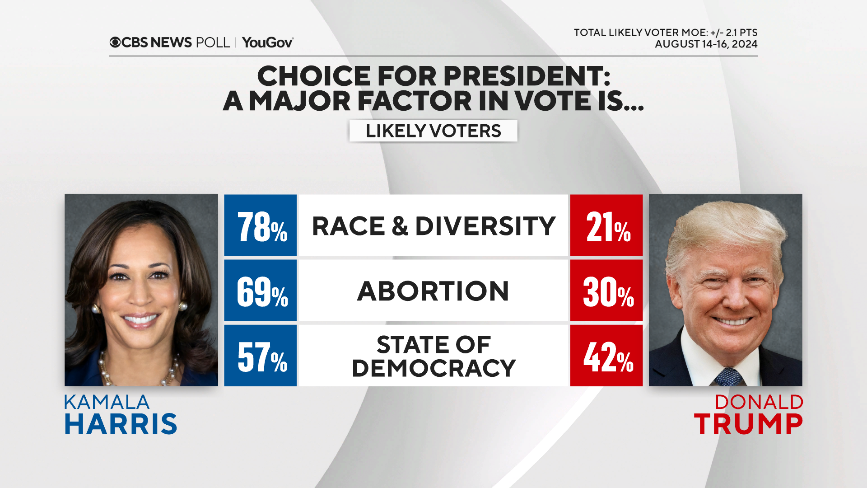When Kamala Harris became the Democratic presidential nominee, the party saw a major surge in enthusiasm from its voters. It pulled the party into an effectively even race with Donald Trump and Republicans, and it has continued to motivate Democrats to vote today.
She and Trump are even across the battleground states that will decide the Electoral College, and now Harris has a 3-point edge nationally.
The late-changing campaign has also opened an historic dynamic, a race within the race to define both Harris and the key issues.
Trumpfor his part, keeps a lot of his advantages: he leads with people who say the economy is a major factor, and he leads with voters who say they aren’t doing as well financially.
Yet voters tell us it’s about more issues than that — abortionthe state of democracy, the border among them — and the contest is marked by a pronounced gender gap between men and women and very different views of which candidate would help them.
Heading into the convention, many voters are still learning about Harris, creating a crucial test for the party this week. A third says they don’t yet know what she stands for. Most voters think her views are similar — but not entirely the same — as Joe Biden’s. And she’s somewhat — but not entirely — seen as connected to Mr. Biden’s economy.
Democrats have continued to close the gap with Republicans in expressing their intention to vote; today, they are effectively even with Republicans in saying so.
Behind the gender-gap election
The gender gap has grown a little more and is approaching 2020 levels now. But it’s more than a vote break. It underpins very different priorities and perceptions.
First, women are more likely than men to see Harris as someone who “fights for people like you” a lot. And women are more likely to see Harris than Trump as fighting for people like them.
Second, views on gender equality efforts connect to voting.
People who think efforts at promoting gender equality between men and women are going too far in America today are voting overwhelmingly for Trump. That’s especially the case for men who think so.
Those who think efforts to promote equally aren’t going far enough or are about right are for Harris.
Third, women help Harris on the economy more than they did Mr. Biden.
Though still trailing Trump on the issue, Harris is doing 8 points better than Mr. Biden was in June among women who say the economy is a major factor for them. She’s effectively even with Trump now among this group. She is also 7 points better than where Mr. Biden was in June among women who say inflation is a major factor.
Abortion: Deja vu from ’22?
For rank-and-file Democrats, abortion and the state of democracy outpace the economy as major factors in their vote.
Pro-abortion rights voters may feel even better about Harris than about Mr. Biden, at least in terms of votes. She gets a higher vote share than he was getting among women who want abortion to be legal.
And 71% of voters think Harris will try to pass a national law protecting abortion.
Three-quarters of voters want mifepristone available. Nine in 10 believe Harris would make or keep it so, while seven in 10 say Trump will try to restrict access to it.
But Democrats are far more likely than independents or Republicans to call abortion a major factor.
Fewer voters overall say abortion is a “major factor” in their vote than say the economy is.
So a key metric to watch in this campaign is whether that view expands more beyond the party’s ranks.
The race to define Harris (And how much separation from Biden does she need?)
People know Trump, agree with him or not. Nearly nine in 10 voters say they know what he stands for.
But it’s a little less so for Harris, as she’s just become the nominee. Around a third say they don’t know what she stands for yet.
This adds another key to watch at the convention as Democrats try to define her message before the Trump campaign does.
People who think her policy views are entirely the same as Mr. Biden’s, who are mostly Republicans, are voting for Trump.
But Harris does better among voters who think her views are mostly but not entirely the same as Mr. Biden’s. This clearly goes for Democrats, but it goes for independents too.
How tied is she to Biden’s economy?
The economy has long been seen as bad, but Harris’ role as vice president is only somewhat tied to it.
Most voters across party lines say Harris’ decisions as vice president have impacted the US economy at least some, but few say they have had “a lot” of impact.
Meanwhile, Trump leads in perceptions of being able to make food and grocery prices go down. This was measured largely prior to Harris laying out inflation plans in a friday speechHowever that sentiment looks to be driven more by general confidence than by any particular policy.
When we follow up with voters who think Trump winning means lower grocery prices for them and why ask, most say it’s mainly because of a “general confidence” they have in Trump rather than specific policies they’ve heard him propose.
Whether Trump can keep or expand that gap, or Harris can begin to close it, could be another key item to watch at the convention and in the coming weeks.
How tied is she to the border?
Trump remains overwhelmingly seen by voters as having policies that would reduce border crossings.
Trump also leads among those who say the border is a major factor in their vote. In fact it is the largest lead he has among any issue group, even higher than inflation. (That’s partly because Republicans overwhelmingly call it a factor.)
Harris is somewhat, but not entirely, tied to US border policy: a third think her decisions as vice president had “a lot” to do with the current situation. While this is largely driven by Republicans, this is higher than the number of voters that connect her decisions as vice president to the economy.
But border crossing attempts are reportedly down, and the percentage of voters calling the border a crisis, while still high, is down slightly from the spring.
For all that, so much of this contest is already locked in. Very few voters express openness to considering another candidate — more evidence this will probably be decided by turnout.
So, for Democrats, the convention will in part be about maintaining that enthusiasm among the base.
Updated state-level estimates from CBS News’ statistical model show close races in all seven battlegrounds — they are all well within the margin of error, with both Harris and Trump in position to win if the election were today.
Here’s how the issues shape up relating to vote choice. Voters can identify multiple items as factors in their decision.
And that all leads into the Democrats’ convention as a guide to what to watch, as they — and Republicans countering it — compete in the contest within the contest to define what 2024 will ultimately be about.
This CBS News/YouGov survey was conducted with a representative sample of 3,258 registered voters nationwide interviewed between August 14-16, 2024. The sample was weighted according to gender, age, race, and education based on the US Census American Community Survey and the US Census Current Population Survey, as well as past vote. Respondents were selected to be representative of registered voters nationwide. The margin of error for registered voters is ±2.1 points.
Battlegrounds are AZ, GA, MI, NC, NV, PA, and WI.







